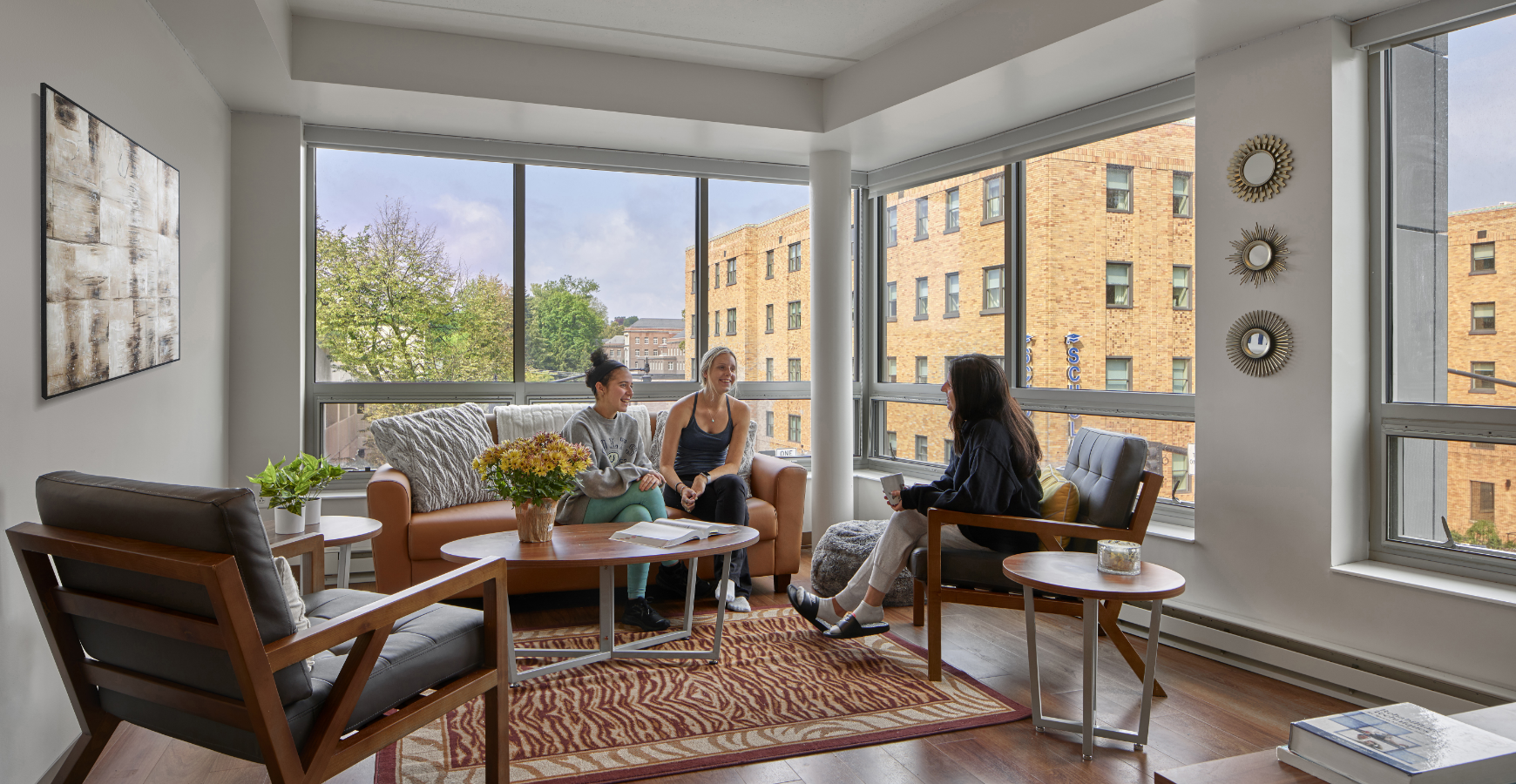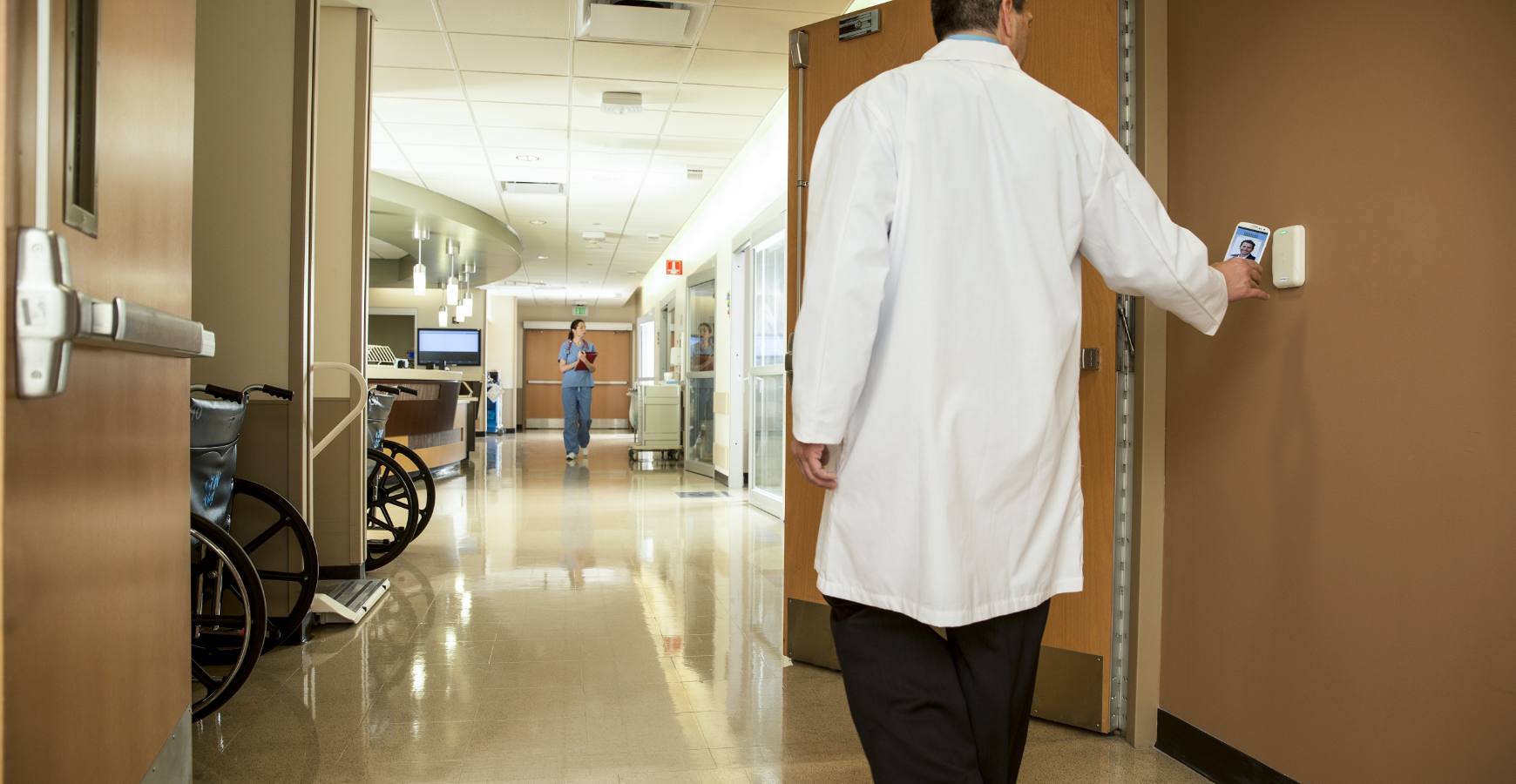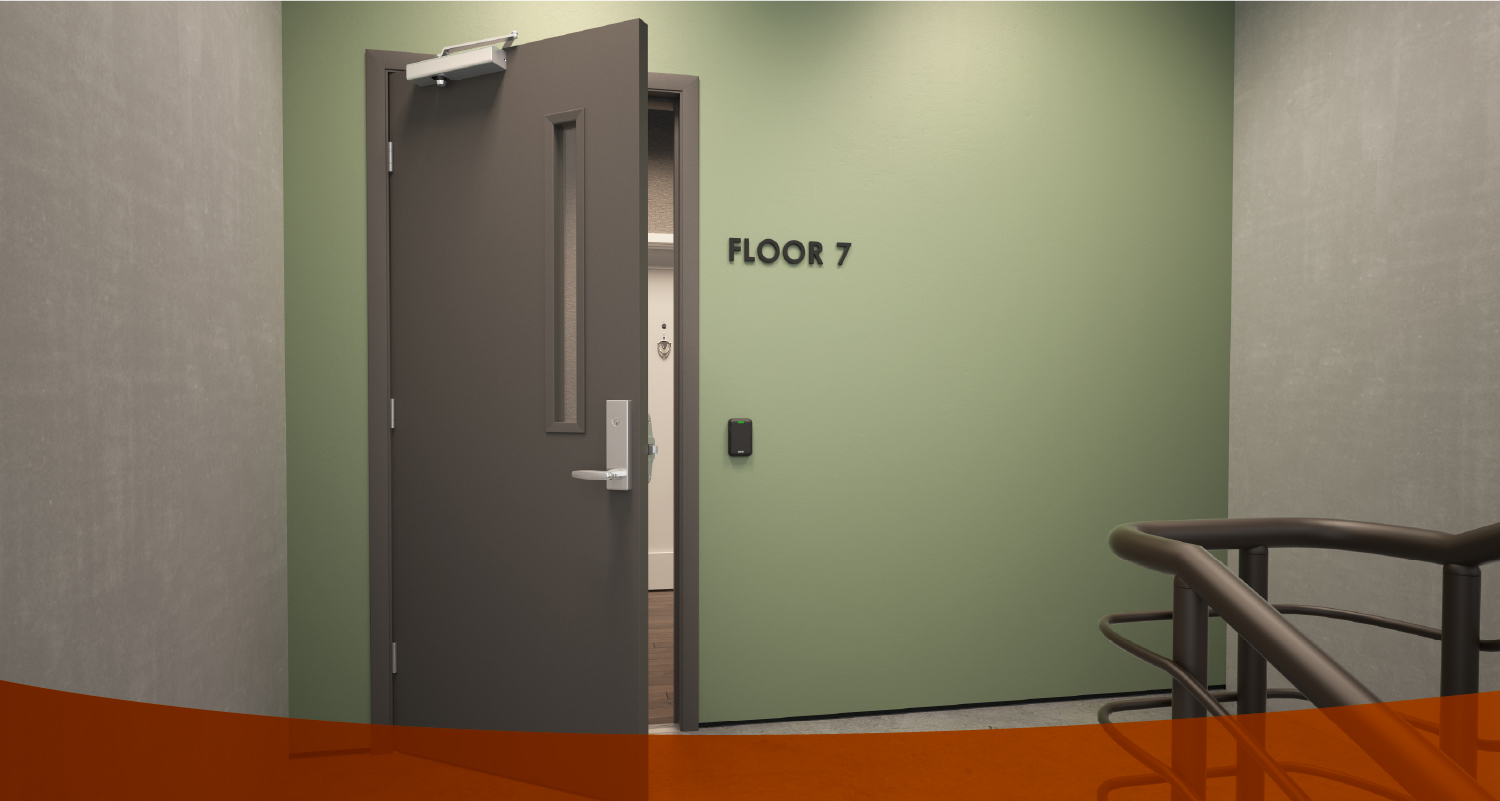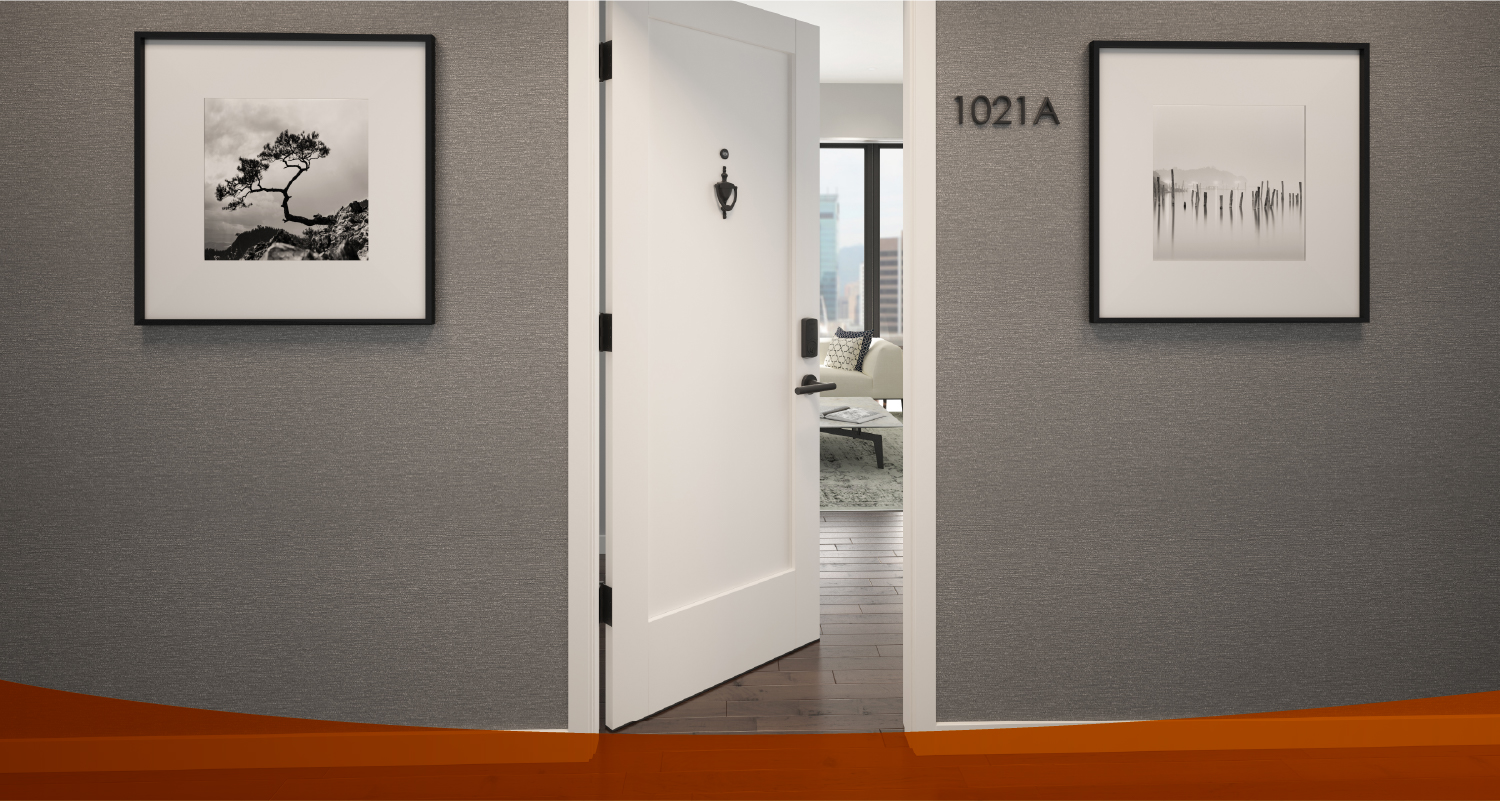Fire Ratings and Their Significance
Fire door assemblies come with different fire ratings, ranging from 20 minutes to three hours, depending on their intended use and location within a building. These ratings indicate the duration for which a door can withstand fire and smoke, thereby preventing their spread. For instance, the doors between apartment units and corridors are typically rated for 20 minutes. This duration is generally sufficient to contain a fire within a unit, allowing residents in other parts of the building to evacuate safely.
Higher-rated doors, such as those with 90-minutes, up to three-hour ratings, are used in more critical areas where the risk and potential impact of fire spread are greater. For example, stairwells in multifamily buildings often have 90-minute rated fire doors. These doors are crucial for protecting the means of egress, ensuring that residents can safely evacuate through the stairwells without being exposed to smoke and flames. They also provide a safe passage for firefighters to access the building and combat the fire.
Hazardous spaces, such as electrical rooms or areas containing flammable materials, typically require even higher-rated fire doors. These doors are designed to contain intense fires that may start in these high-risk areas, preventing them from spreading to other parts of the building. An example would be a hospital fire that started in an electrical room. The fire door successfully contained the blaze, preventing it from spreading and causing further damage or endangering lives.
The varying fire ratings are a testament to the tailored approach needed in fire safety, ensuring that each part of a building has the appropriate level of protection. Because fire doors with higher ratings are more expensive due to the materials and engineering required to meet stringent fire resistance standards, equipping every door in a multifamily building with a 3-hour fire rating would substantially increase construction and maintenance costs. Building codes are designed to balance safety with cost-effectiveness, ensuring that resources are allocated according to priority. The proper installation and maintenance of these doors are critical, as even the highest-rated door will fail to perform its function if it is not correctly installed or used, or if its components are compromised.
Code Compliance and Maintenance of Fire Doors
Ensuring fire door assemblies are code-compliant and well-maintained is critical for their effectiveness in preventing the spread of fire and smoke. In the United States, two primary sets of model codes govern fire door requirements: the International Code Council (ICC) and the National Fire Protection Association (NFPA). These provide comprehensive guidelines for fire safety, including specific requirements for fire door assemblies. The International Building Code (IBC), developed by the ICC, outlines where fire-rated doors are necessary within a building, such as in corridors, stairwells, and hazardous areas. The NFPA 80 standard details the installation, inspection, testing and maintenance of fire doors to ensure they perform effectively during a fire.
Compliance with these codes is mandatory and ensures a standardized approach to fire safety across different jurisdictions. Local codes should also be accounted for—if in doubt, contact your local code expert.
Regular Inspections and Maintenance
Maintaining fire door assemblies in good working condition is essential to ensuring they perform their life-saving functions during a fire. According to NFPA 80, fire door assemblies must undergo annual inspections to verify that they comply with safety standards and are fully operational.
Annual Inspection Requirements
The NFPA 80 standard mandates that fire door assemblies be inspected at least once a year. These inspections are critical for identifying and addressing any issues that could compromise the door's ability to contain fire and smoke. Inspectors must check all components, including the door, frame, hinges, latches and automatic closing mechanisms, to ensure they are in proper working order.
On-site property managers, maintenance crew and building owners play a pivotal role in maintaining fire door functionality. They are responsible for ensuring that regular inspections are conducted and that any identified issues are promptly addressed. Depending on role, this includes scheduling annual inspections, performing routine maintenance and educating building occupants about the importance of not tampering with fire doors. Steps that maintenance crew, property managers and building owners alike can regularly take to ensure fire doors remain effective include:
- Remove Wedges and Props: Fire doors should never be propped open, as this defeats their purpose. Ensuring that doors are free from wedges or other objects that keep them open is a simple but critical step.
- Check Door Closers: Automatic door closers must be functioning correctly to ensure that doors close and latch automatically in the event of a fire. Regularly test door closers and adjust them (or alert maintenance staff) if necessary.
- Inspect Latches and Seals: Ensure that latches are secure and that seals around the door are intact. These seals help prevent smoke from passing through gaps around the door.
Challenges and Common Issues
Maintaining fire doors can be complex, and there is a potential for overlooking critical issues. For instance, door closers can become misaligned, seals can wear out, and latches can fail over time. Additionally, the everyday use of doors in high-traffic areas can lead to wear and tear that might not be immediately noticeable but can significantly impact the door's effectiveness in an emergency.
Fire Safety Best Practices
Fire prevention in multifamily properties extends beyond the installation and maintenance of fire doors. Implementing best practices and educating building occupants are crucial steps in creating a safe living environment.
Best Practices for Fire Door Safety
One of the most effective ways to enhance fire safety is by educating building occupants about the importance of fire doors. Residents should understand that fire doors are designed to save lives by containing fire and smoke. Informational sessions, signage, campaigns and ongoing communication can help reinforce the importance of not tampering with fire doors.
A common issue in many buildings is fire doors being propped open for convenience or noise complaints. It may be annoying to open a door when carrying groceries or hear a door close repeatedly when residents move throughout the building, but keeping them propped open renders them ineffective. It's essential to ensure that fire doors are always closed unless they are equipped with automatic closing mechanisms that activate during a fire. Regular checks should be conducted to remove any wedges or objects that might keep doors open and residents should be encouraged to look out for and close propped doors.
Proptech can be used in conjunction with fire doors. Access control systems can ensure that doors remain closed and only authorized personnel can open them. This works well when residences are located above commercial spaces and have connected stairwells. If access control is used to keep these doors locked, they must be equipped with automatic unlocking mechanisms so firefighters can still access the floors. Additionally, automatic door operators can be integrated with fire alarm systems to ensure that doors close automatically when a fire is detected.
While fire doors are a critical component of fire safety, other best practices should also be followed:
- Ensure that fire alarms and smoke detectors are installed in the required areas and are regularly tested and maintained. The NFPA recommends adding a smoke detector inside each bedroom.
- Place fire extinguishers in mandated locations and ensure residents know how to use them. All states have different requirements on the location and number of fire extinguishers needed per apartment or square foot.
- Develop and regularly update evacuation plans. Conduct fire drills to ensure residents are familiar with escape routes and procedures.
- Educate residents on safe usage of grills and other cooking equipment, informing maintenance promptly if smoke or fire alarms have a low battery and looking out for other potential fire hazards.
Resources and Further Education
For those looking to deepen their understanding of fire door safety and code requirements, iDigHardware (originally titled iHateHardware!), managed and regularly updated every weekday by Lori Greene, is an invaluable resource. The blog offers detailed information not just on fire door assemblies, but also code requirements for all types of buildings, best practices for maintenance and compliance and more resources.
The Fire Safety Research Institute (FSRI), part of UL Research Institute, "Close Before You Doze" program is an initiative to educate the public on the importance of closing bedroom doors at night to prevent the spread of fire and smoke, helping to save the lives of sleeping occupants. Researchers found that closed-door rooms on both floors during the fire’s spread had average temperatures of less than 100 degrees Fahrenheit versus 1000+ degrees in the open-door rooms, giving people significantly more time to escape.
Finally, continuing education is key to maintaining a high level of fire safety. Property managers and building owners should stay up to date on codes and best practices, and encourage regular training and awareness programs for both residents and staff. These programs can cover a range of topics, from basic fire safety practices to specific instructions on maintaining and using fire safety equipment.
Conclusion
Fire doors are an essential component of fire safety in multifamily properties, providing a critical barrier that can contain fires and smoke, protect lives and minimize property damage. Their importance cannot be overstated, as they offer residents crucial time to evacuate and enable firefighters to control and extinguish fires more effectively.
This October, and also year-round, we encourage property owners and managers to make fire door safety a top priority. Engage with local code experts to ensure compliance and leverage available resources to maintain a safe living environment for all residents. By taking these proactive steps, you can significantly enhance fire safety in your multifamily properties and protect the lives of those who call them home.
 Featured ProductGo beyond expectations with the new Von Duprin 70 Series exit devices. Delivering both performance and value, this solution provides the quality and trust you expect from Von Duprin at a medium price point.
Featured ProductGo beyond expectations with the new Von Duprin 70 Series exit devices. Delivering both performance and value, this solution provides the quality and trust you expect from Von Duprin at a medium price point.




































